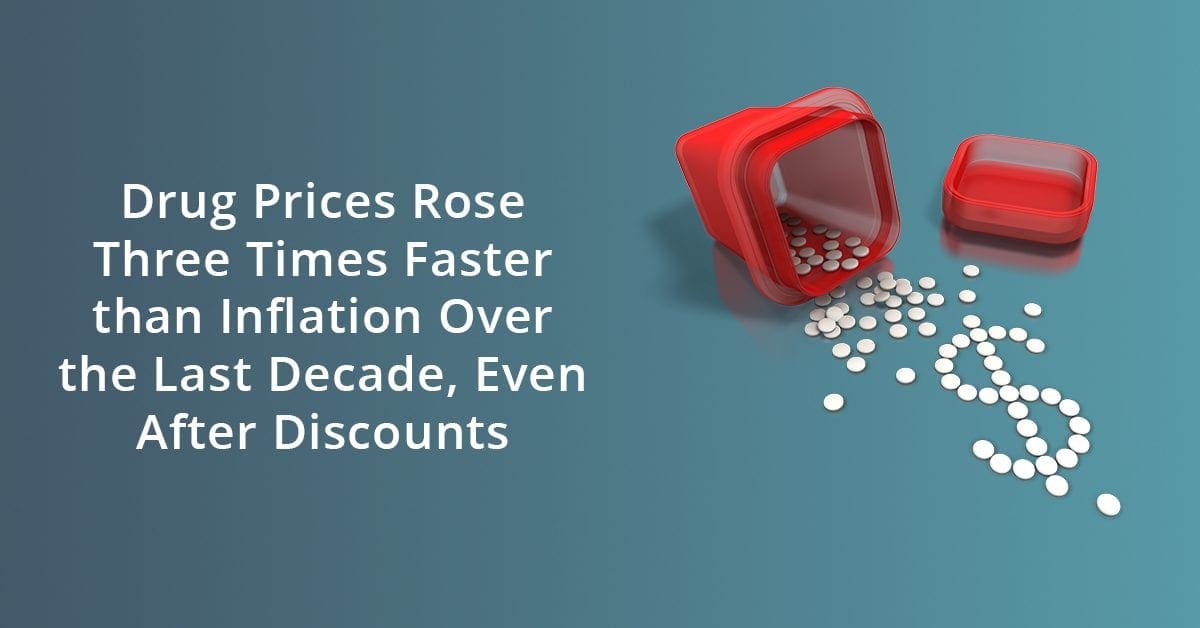Call us toll-free: 800-878-7828 — Monday - Friday — 8AM - 5PM EST


By Jeff Lagasse for Healthcare Finance
The net cost of prescription drugs — meaning sticker price minus manufacturer discounts — rose more than three times faster than the rate of inflation over the course of a decade, according to a study published in JAMA. It’s the first analysis to report trends in net drug costs for all brand-name drugs in the U.S.
The study is one of three manuscripts by researchers in the Center for Pharmaceutical Policy and Prescribing at the University of Pittsburgh’s Health Policy Institute published in this week’s special issue of the journal, which focuses on prescription drug costs.
This isn’t the first time that lead author Dr. Inmaculada Hernandez and her team have examined the issue. They showed in past research that list prices for prescription drugs have increased steadily over the past decade.
WHAT’S THE IMPACT
In the new analysis, the team used revenue and usage data for 602 brand-name drugs to track list and net prices from 2007 to 2018. Inflation-adjusted list prices increased by 159%. Net prices, which account for rising manufacturer discounts, including rebates, coupon cards and 340B discounts, increased by 60%. That’s 3.5 times general inflation.
In 2015, net prices began leveling off. Still stable net prices don’t automatically mean that prescription drug costs are affordable for consumers. A lot of the discount isn’t going to the patient — and that’s because the vast majority of the discount likely consists of rebates paid directly to public and private insurers. Rebates don’t usually affect the amount patients pay through copays or coinsurance, and are based on list price, not net.
Beneath the overall trends, there was large variability across different drug classes. In some cases, such as insulins or TNF inhibitors, there was a widening gap between list and net prices. In others, such as cancer drugs, list and net prices increased in parallel. Multiple sclerosis treatments were an exceptional case, where even after discounts, net prices more than doubled over the decade in inflation-adjusted dollars.
Also, discounts are much larger for Medicaid than for other payers, likely reflecting regulation, including the mandatory Medicaid rebate based on price increases over inflation. Discounts for other payers are based on negotiations.
THE LARGER TREND
After reviewing tens of millions of insurance claims for the country’s 49 most popular brand-name prescription drugs, a team from Scripps Research Translational Institute found last summer that net prices rose by a median of 76% from January 2012 through December 2017 — with most products going up once or twice per year.
The substantial price increases were not limited to drugs that recently entered the marketplace, as one might expect, or to those lacking generic equivalents. And the increases often were “highly correlated” with price bumps by competitors.
Meanwhile, a drug-cost survey published last year found that unfilled prescriptions remain a problem, with 73% of physicians taking the patient’s responsibility for cost into account in making a prescribing decision. Almost as many physicians, 70%, said they believe the high cost of prescribed medications leads to unfilled prescriptions.
